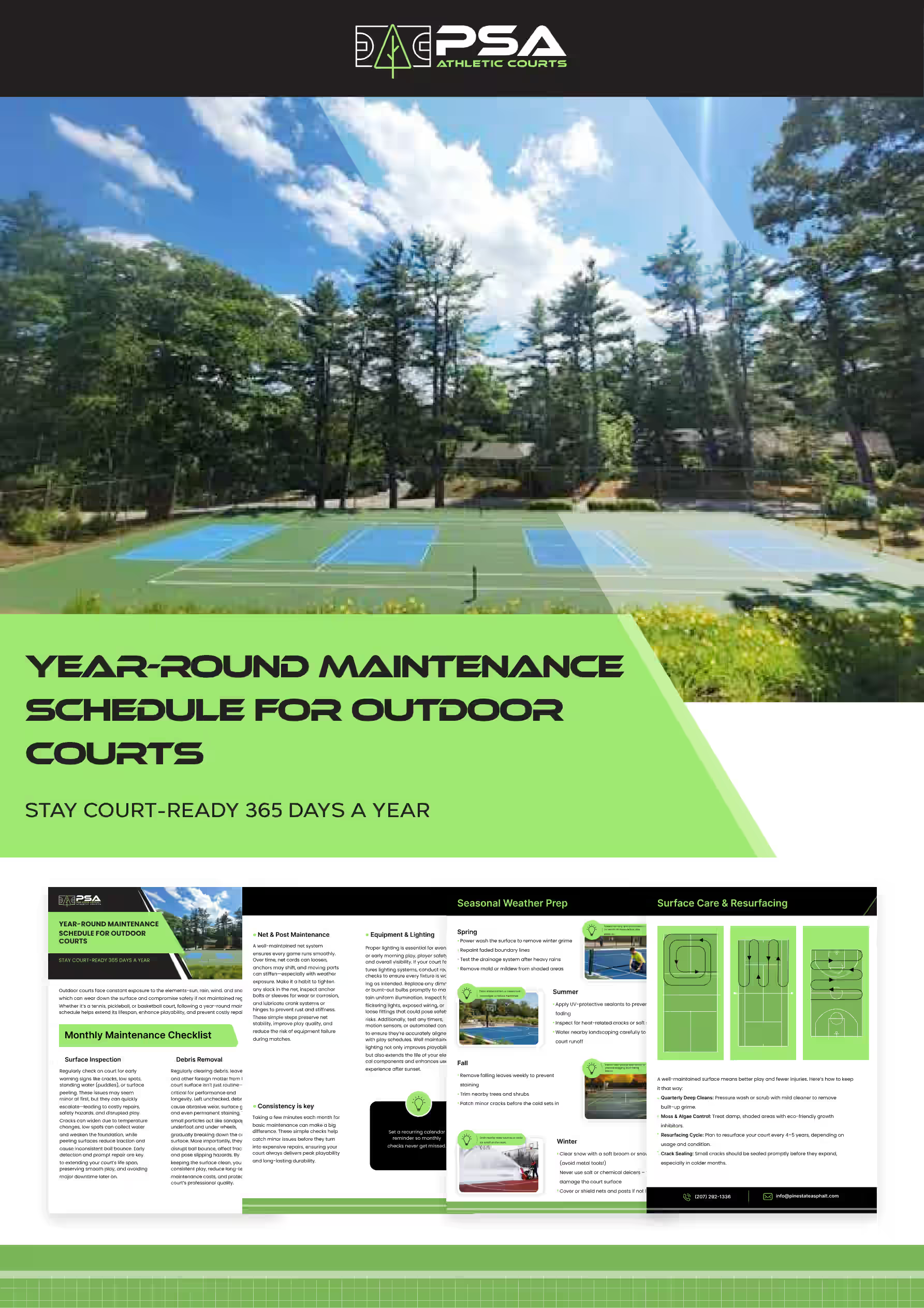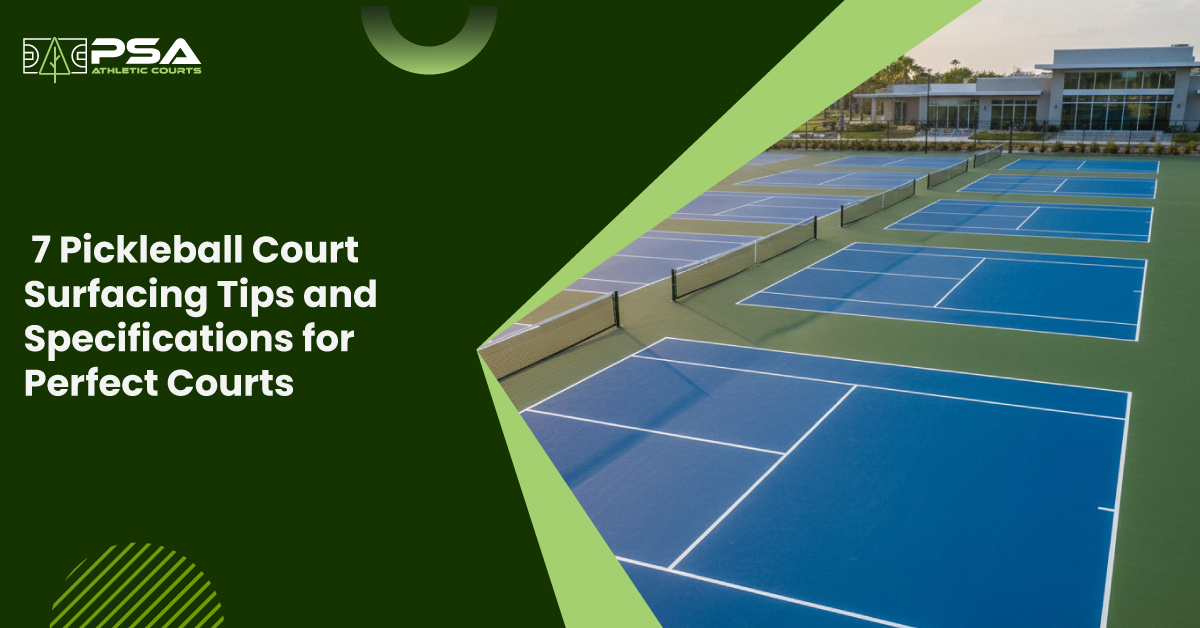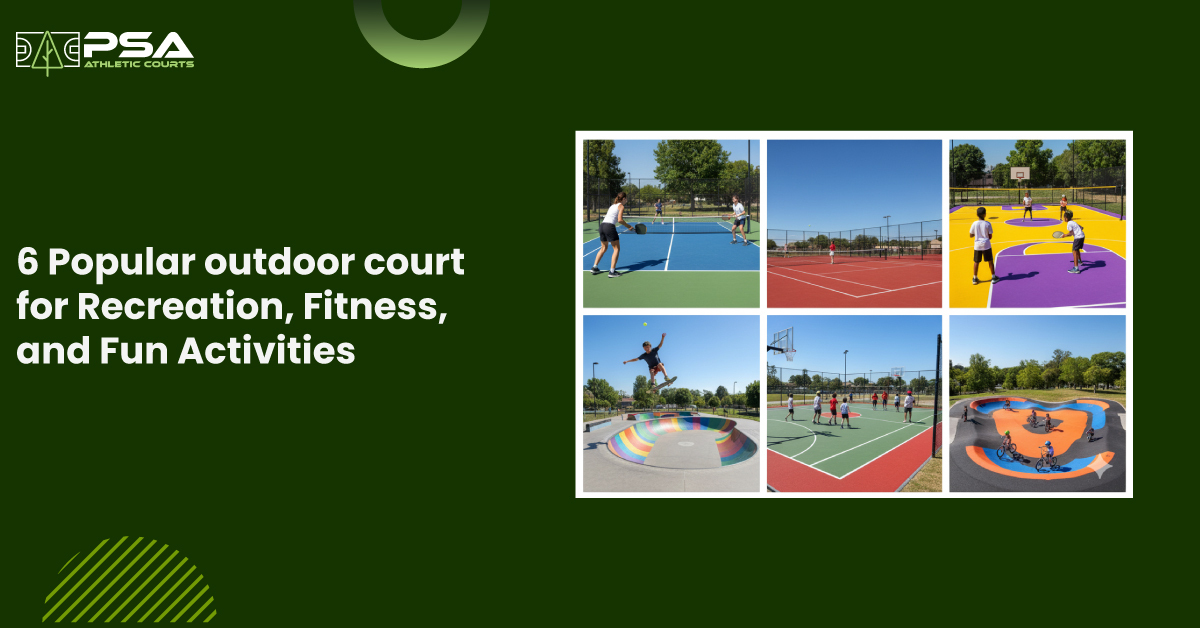Pickleball’s rising popularity has led to a boom in the number of pickleball courts in the country. The year 2024 saw a record breaking construction of over 18,000 courts in the U.S. If too are thinking of hopping the bandwagon then you’ve come to the right place.
Whether you are building a private backyard court or a public facility, this guide by Pine State Courts will surely help. This blog will discuss the eight essential pickleball court surfacing tips and specifications to help build courts that are not only tournament-ready but enjoyable for everyday play.
So, let’s begin!
1. Choosing the Right Surface Material
One of the primary factors to look out for when building a pickleball court is its foundation. It determines everything from the consistency of ball bounce to the court’s long-term maintenance.
With its roots in tennis, an asphalt or concrete base is also a common choice for surfacing a pickleball court. Besides this some other surfaces like Polyurethane and Modular tiles are also gaining popularity. Here’s a brief introduction to each surface material:
- Concrete is a durable, stable surface ideal for permanent installations. But it can be hard on the player’s joints.
- Asphalt is a more flexible and cost-effective surface for a pickleball court construction but it may need resurfacing sooner than concrete.
- Polyurethane is a durable, cushioned surface that offers consistent ball bounce and good traction, it is however costly to install initially.
- Modular tiles offer easy installation with a stable, cushioned surface but offer inconsistent bounce, and are costly to install.
Check out our guide on pickleball court resurfacing (Ultimate 101 Guide to Pickleball Court Resurfacing: Costs, Process, and Best Practices) for a deeper insight into the resurfacing process, cost and key factors to consider.
2. Pickleball Court Dimensions and Layout Specifications
Like any other athletic court, proper sizing and orientation of pickleball court is also important for consistent gameplay and player safety. Some pickleball court specifications that you should look out for are its dimensions and layout, these include:

- The official inbound play area measurements from USA Pickleball dictate a playing area of 20 ft. × 44 ft.
- The recommended total area to include the out of bounds is 30 ft × 60 ft to provide room for player movement and safety.
- An outdoor pickleball court should be oriented North-South to minimize Sun glare.
- For an indoor pickleball court the ceiling should be a minimum 18-20 ft. high to prevent any hindrance in the play.
- The net is designed with a slight dip in the middle to encourage faster-paced play 36 inches high at the sidelines and 34 inches at the center.
- The line striping should be 2 inches wide in contrasting colors for clear visibility.
3. Pickleball Court Surface Finish and Texture Specifications
The surface coating of a pickleball court is what gives it a professional feel. It adds to the playability and aesthetics of the court. Most high-performing courts use 100% acrylic coatings for pickleball court surfacing while there’s another rising option, polyurethane.
Let’s take a brief look at each of these surface finishes:
Characteristics of Acrylic coatings include:
- It allows vapor transmission to prevent blistering.
- It is UV resistant and durable.
- It offers a consistent ball bounce.
Characteristics of Polyurethane coatings include:
- It offers a durable, cushioned surface.
- It has a consistent ball bounce and good traction.
- It can be customized easily.
Besides the surface coating, the texture of the court matters too. Fine silica or polymeric sand is often blended into coating material to create a non-slip finish. It creates a surface that isn’t overly abrasive on shoes or the ball.
Some facilities also add cushion layers beneath the top coating for extra comfort and joint protection of players. This is a great option for senior players or high-traffic courts.
Wanna know the best time to resurface your pickleball court to maintain its performance? Read our guide for an in-depth knowledge of the same.
4. Drainage and Water Management
Poor drained courts are a living nightmare for any court owner. Even the best coatings can’t survive standing water. It leads to development of cracks, fading of lines, and is unsafe for players.
Here are some best practices compiled by Pine State Courts, to save you from this nightmare:
- When designing a concrete slab, ensure it has a gentle slope (~1%).
- Use perimeter drains, catch basins, or French drains to move the water away from the court.
- Regularly clean drains and edges of the playing field to prevent any clogs.
- Address any water pooling issues immediately.
5. Guideline for Choosing the Best Surface Colors for Pickleball Courts
How a court looks is as important as how well it plays. With team colors and logos your team is always ready to take on any opponent, it boosts their morale and confidence.
Here’s a few tips for choosing the right colors for your pickleball court:
- Choose contrasting colors between the playing area and out-of-bounds zones for a clear separation.
- Avoid using dark surface colors in hot climates as they absorb heat and cause Sun glares. Instead go for light colors as they stay cooler.
- The court color should create a contrast against the ball color for maximum visibility.
- Although official lines are typically white, other colors are also acceptable if they provide a good contrast.
6. Safety Features and Accessories
Another factor that contributes to a perfect court is the safety features and accessories of the court. Player safety is just as important as court aesthetics to ensure no player is injured during practice or the actual match.
Here are a few must-have safety elements for a pickleball court:
- Build a non-slip surface with a balanced texture.
- Use padded posts and net systems to reduce the impact of hitting them accidently.
- Fence the perimeter of the court to keep balls in the play area and ensure the safety of spectators.
- Use LED lighting for nighttime play but make sure the court meets the local codes.
- You can add windscreens for outdoor pickleball courts to reduce wind interference.
- For indoor pickleball courts, make sure there are no low-hanging fixtures or other obstructions.
7. Budgeting and Cost Considerations
Budgeting is an essential factor to consider as when building or resurfacing a pickleball court (7 Key Insights on Pickleball Court ROI, Trends, and Durability). It involves both an upfront investment and a long-term investment. The size of the court, type of surface, additional cushioning, and lighting, all contribute to the cost of pickleball court installation and should be considered before starting this project.
The overall cost of a pickleball court depends on several factors, including the surface type (asphalt or concrete), whether you add a cushioned layer, and optional features like nets, fencing, and lighting. Accessibility of the location, existing site conditions, and any necessary groundwork preparation can also influence the total investment.
Here are a few tips to save you some money:
- Consider building multi-athletic courts to lower the cost of installing each court.
- Choose durable coatings to reduce long-term maintenance costs.
- Plan the drainage correctly in advance to avoid any costly repairs later.
- Regularly clean the surface and maintain it to increase the resurfacing time.
Takeaway
Installing a pickleball court involves more than just choosing the site, the surfacing material, court dimensions, texture of the court, safety, and drainage matters too. This is why it is important to have an expert on board.
At Pine State Courts, we understand the right surfacing impacts gameplay, durability, maintenance, and even player safety. Our court installation, resurfacing and maintenance solutions are thus tailored to your needs and location of the court.
Frequently Asked Questions
1. How thick should asphalt be for a pickleball court?
The thickness of asphalt for a pickleball court should be 5 inches and no less than 3 inches. A common method of pickleball court construction involves laying a base layer of 3 inches and a top layer of 2 inches.
2. What kind of finish is on a pickleball court?
A common finish on a pickleball court consists of a concrete or asphalt base with a top acrylic coating. This finish provides great traction, consistent ball bounce, and player safety with an additional layer of cushioning.
3. What are the surface specs for a pickleball court?
The surface specs for a pickleball court include laying a strong asphalt or concrete base that’s durable for an outdoor play. Add a layer of acrylic cushioning for player safety. For an indoor court polyurethane surface or modular tiles suit best. Make sure there is 1% sloping for proper drainage of the court.
4. Is concrete or asphalt better for a pickleball court?
Both asphalt and concrete make excellent pickleball court surfaces, and the best choice comes down to your priorities. Asphalt is often preferred for its smooth playability, better shock absorption, and cost-effectiveness, while concrete offers long-term durability and slightly lower maintenance needs. With proper installation and surfacing, an asphalt court can perform just as well as concrete and deliver a great playing experience for years.
DOWNLOAD OuR
FREE GUIDE
Stay on top of your court maintenance all year. Whether it's rain, snow, summer, or fall - we've got you covered with this complete guide.
Get a complete month-by-month breakdown to keep your outdoor courts safe, clean, and game-ready.










